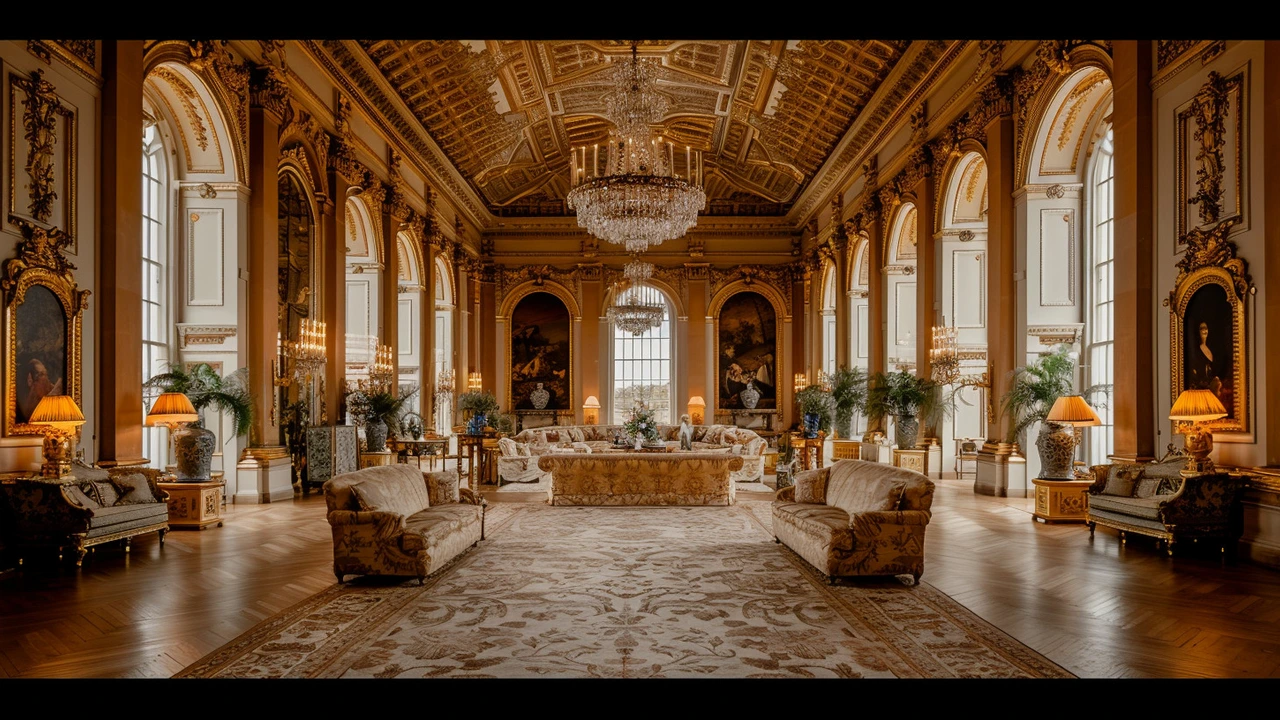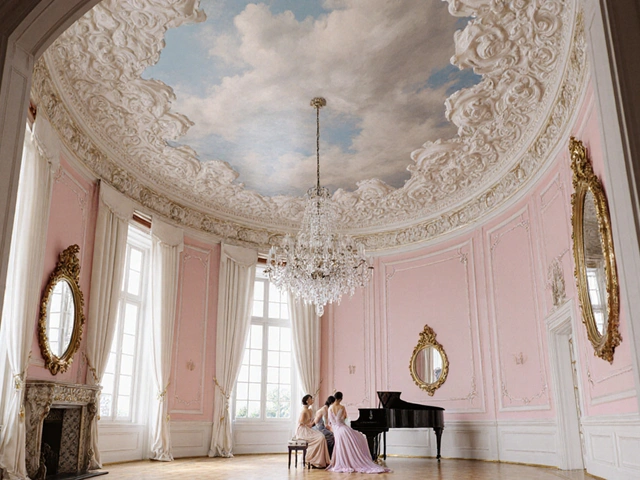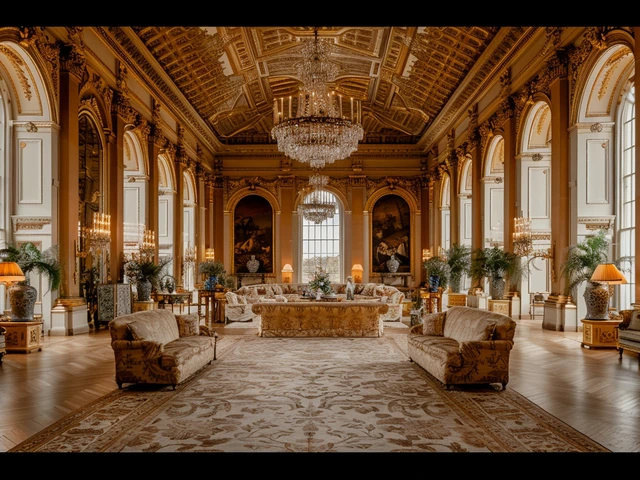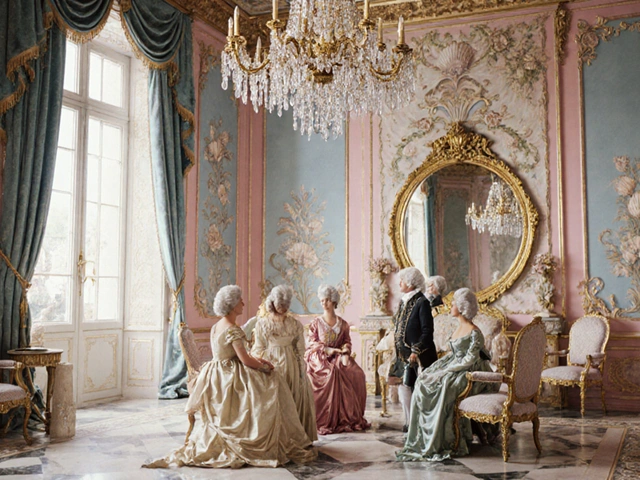Rococo art changed the landscape of 18th-century Europe, steering away from the grandeur of Baroque to a more playful, light-hearted elegance. With its roots in France, it quickly spread across the continent.
This artistic movement is distinct for its intricate designs, light color palettes, and themes of love and nature. As we dig deeper, we'll uncover how Rococo aesthetics have permeated various forms of art and left a lasting impression.
- Origins of Rococo
- Key Characteristics
- Notable Artists
- Rococo in Architecture and Design
- Influence on Later Art Movements
- Tips for Recognizing Rococo Art
Origins of Rococo
Rococo, also known as Late Baroque, emerged in France during the early 18th century, just as the Baroque period was winding down. The shift began shortly after the death of King Louis XIV in 1715. With the Sun King's stringent and ceremonious rule finally over, artists, decorators, and architects felt liberated, allowing a wave of playful creativity to flourish. This new style was initially designed to provide an escape from the formal and grandiose elements of Baroque art, which had dominated the cultural landscape for decades.
Many art historians consider the French aristocracy as one of the main driving forces behind the Rococo movement. After Louis XIV's death, his successor, Louis XV, moved the royal court from the grandiose Palace of Versailles back to Paris. This transition signaled a cultural shift towards more intimate and refined settings, favoring the personal over the imposing. The high society of Paris wanted art that mirrored the lighter, more carefree spirit of the times. Rococo fit the bill perfectly with its elegant and graceful designs.
One of the first figures to embrace Rococo was Jean-Antoine Watteau, whose work often depicted idyllic scenes of love and nature. His paintings, filled with light-hearted subjects and soft colors, stood in stark contrast to the darker, more serious works of Baroque artists. Watteau’s piece, "Pilgrimage to the Island of Cythera," is often credited with laying the groundwork for the Rococo art style.
Another significant contributor was sculptor and designer François de Cuvilliés, who incorporated Rococo elements into architectural designs. His work on the Amalienburg, a hunting lodge in Munich, is a prime example of Rococo's playful and ornate aesthetic. This emphasis on intricate decoration appealed to the tastes of the European elite and quickly spread beyond France to other countries, including Germany, Austria, and Italy.
"Rococo is a fleeting moment captured in gilded frames, a whisper of elegance that never fully dissipates." – Jean Claude, Art Historian
Religious institutions initially resisted Rococo, favoring the solemnity of Baroque art. However, the wave of change was too strong, and eventually, Rococo's influence seeped into church interiors and sacred art. Even though it was a secular movement at its core, its decorative style found its way into religious settings, infusing them with a sense of light and openness.
The term
Key Characteristics
Rococo art is renowned for its elaborate and ornamental style, a stark contrast to the more sober and structured Baroque that preceded it. The movement is often described as light, agile, and playful, featuring intricate designs and soft color palettes that evoke a sense of whimsy and romance. One of the most distinctive elements is its use of curves and asymmetrical forms, often inspired by nature.
A hallmark of Rococo is its decorative arts, which extend beyond paintings to include architecture, furniture, silverware, and porcelain. The emphasis on decoration and personal luxury can be attributed to the patronage of the French aristocracy, who were eager to display their wealth and sophistication. This led to an abundance of gilded mirrors, ornate tapestries, and intricate frescoes filling their salons.
Color plays a significant role in the Rococo aesthetic. Unlike the dark, rich tones of Baroque, Rococo employs a lighter palette featuring pastel colors such as soft blues, pinks, and creams. These hues are often combined with abundant natural light, creating airy and spacious settings that exude charm and elegance. Complementing these light tones are gilded details that provide a luxurious finish without overwhelming the eye.
Another key feature is the thematic focus on love, mythology, and playful subjects. Rococo paintings often depict romantic scenes, including flirtatious encounters, idyllic gardens, and scenes from mythology treated with a light-hearted touch. These themes were popular among the affluent classes who sought to escape the harsh realities of 18th-century life through art that celebrated pleasure and beauty.
“Rococo is an art style that adapts well to its environment, making it flexible and dynamic - it moves through walls, ceilings, and enlivens objects,” highlights art historian Robert Neuman.
Rococo’s appeal also lies in its skilled craftsmanship. Artists such as François Boucher, Jean-Honoré Fragonard, and Antoine Watteau are celebrated for their exquisite technique, fine brushwork, and attention to detail. Their works often feature delicate figures, elaborate costumes, and lush landscapes that capture the essence of Rococo’s ethereal beauty. The integration of art and craft is one of the era’s defining qualities.
The movement also introduced new motifs like the rocaille (from which the term Rococo is derived), characterized by shell-like shapes and intricate scrolls. These motifs are ubiquitous in Rococo art, appearing in everything from furniture to architectural ornamentation. Nature-inspired elements such as flowers, leaves, and vines further enhance the sense of organic fluidity that defines the style.
The overall atmosphere of Rococo art is one of indulgence and escapism. It created spaces where the elite could enjoy leisurely activities and entertain guests in opulent surroundings. Its legacy can be seen in later movements that valued emotion and personal expression, proving that Rococo's influence extends far beyond its own time.
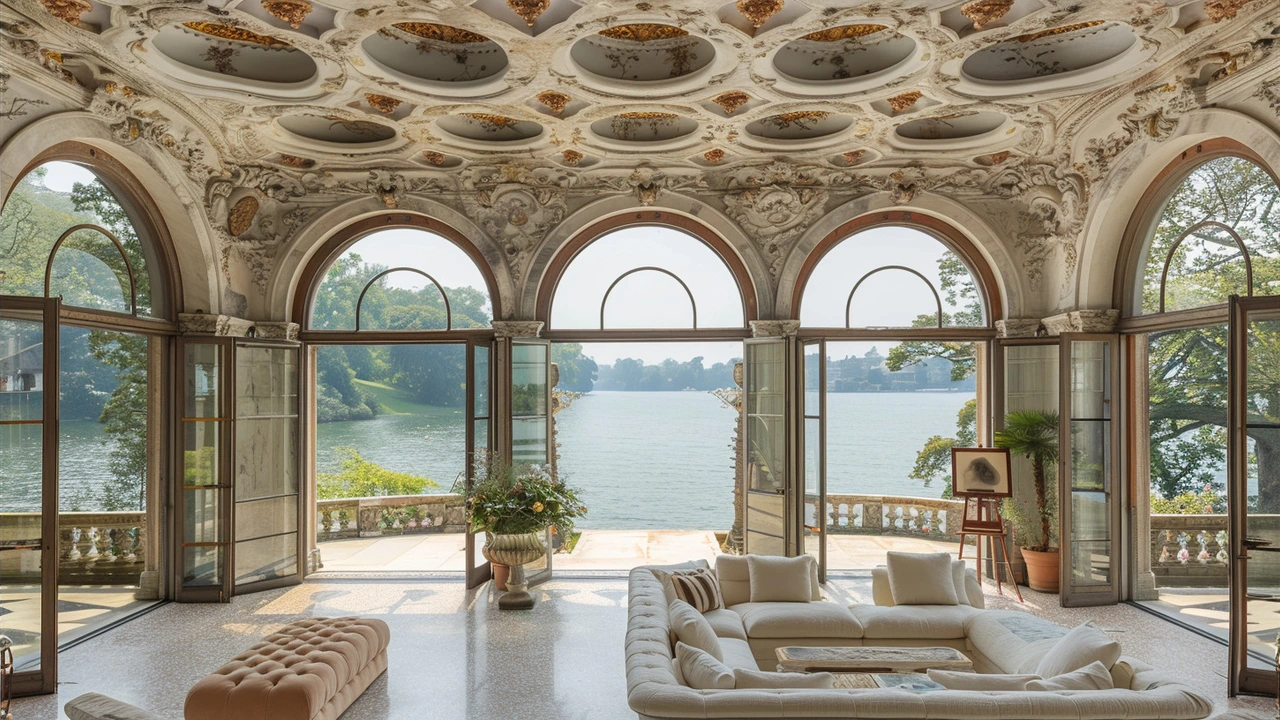
Notable Artists
The Rococo era flourished with a host of talented and innovative artists who significantly influenced the art world. One of the most celebrated Rococo painters is François Boucher. Boucher was known for his idyllic and voluptuous depictions of classical themes, decorative allegories, and pastoral scenes. His works were characterized by their playful eroticism, exquisite detail, and light-hearted tones. With a career that began in the academy of Saint Luke and peaked as the first painter to King Louis XV, Boucher's art remains an enduring representation of the Rococo spirit.
Another pivotal artist of the Rococo movement is Jean-Honoré Fragonard. Fragonard is famous for his exuberant and often titillating style. His painting, “The Swing,” is emblematic of Rococo's penchant for lightness and hedonistic pleasure. Fragonard's use of fluid brushwork and rich color palette created paintings that were full of movement and emotion. Born in Grasse and trained in Paris under the tutelage of Boucher, Fragonard’s career spanned several decades during which he produced over 550 paintings, many of which are masterpieces of the Rococo era.
In the realm of sculpture, Étienne-Maurice Falconet stands out as a significant figure. Falconet's sculptures often mirrored the playful and sensuous themes of Rococo painting. His most famous work, “Pygmalion and Galatea,” displays an incredible attention to detail and fluidity of form that embodies the essence of Rococo elegance. Falconet’s career flourished under the patronage of Madame de Pompadour, and he made significant contributions to the decoration of the Petit Trianon at Versailles.
Jean-Antoine Watteau is often credited with pioneering the Rococo style, especially in his creation of the “fête galante” genre. This genre focused on the depiction of noble outdoor entertainment and leisure activities. Watteau's keen observation of his subjects and his ability to capture the fleeting moments of grace and charm lent his paintings a unique and captivating quality. One of his notable works, “Pilgrimage to Cythera,” showcases the dreamy and idyllic qualities that Rococo art champions.
“The most exalted art speaks to us in a language we cannot hear, a dance we feel on the tips of our fingers.” - François Boucher
In the context of architecture, Germain Boffrand made substantial contributions that characterized Rococo’s architectural feats. Boffrand's designs for the interiors of the Hôtel de Soubise in Paris demonstrate the intricate stucco work, ornamental mirrors, and undulating curves that are trademarks of Rococo architecture. His works offer a seamless blend of artistic and architectural design, creating spaces that are as much about art as they are about function.
While Rococo art may seem superficially focused on decorative elements, these artists infuse their works with a depth that reveals a lot about the social and cultural milieu of 18th-century Europe. The playful and ornate aesthetics they championed reflect a world where art and life beautifully intertwined, creating a lasting legacy for the Rococo movement. Recognizing the works of these notable artists not only deepens our appreciation for Rococo but also enriches our understanding of its historical and cultural context.
Rococo in Architecture and Design
Rococo architecture and design emerged as a response to the grandeur of Baroque, replacing its serious tone with whimsical, light-hearted elegance. This movement blossomed in the early 18th century, primarily in France, before spreading throughout Europe. Notably, Rococo buildings often feature asymmetrical designs, intricate detailing, and lighter color palettes, creating an air of intimacy and charm.
One of the most iconic examples of Rococo architecture is the Amalienburg, a hunting lodge in Munich's Nymphenburg Palace park. Constructed between 1734 and 1739, this stunning building showcases elaborate stucco work, pastel colors, and elaborate mirrors that reflect light in fascinating ways. Another notable structure is the Sanssouci Palace in Potsdam, Germany, often referred to as the 'German Versailles.'
In interior design, Rococo rooms typically feature ornate furniture, delicate porcelain, and rich textiles. The emphasis was on creating a cohesive, harmonious environment that pleased the eye and inspired relaxation. Walls were often adorned with tapestries or intricate mouldings, while ceilings might be painted with light, pastoral scenes.
Rococo furniture is characterized by its elegant curves, gilded accents, and a certain playfulness. Chairs and tables were designed to balance function with aesthetic appeal. These pieces often featured cabriole legs and intricate carvings, sometimes depicting scenes of nature or mythology. Cabinets and commodes were not just storage solutions but works of art, showcasing the skills of the artisans who created them.
“The Rococo style is abundant in its emphasis on asymmetry and natural motifs. It's almost like a celebration of life's more joyful and playful aspects, transitioning from the rigidity of Baroque,” notes art historian Emily Camins.
The movement's influence extended to landscape design as well. Gardens were laid out in informal, naturalistic styles. This was a stark contrast to the geometric, formal gardens of the Baroque period. The gardens of the Palace of Versailles, redesigned during the Rococo era, feature winding paths and curving lines that encourage leisurely strolls and reflection.
Whether through architecture, interior design, furniture craftsmanship, or landscaping, Rococo left a lasting imprint on the fabric of European culture. Its emphasis on comfort and beauty over formalism and grandiosity provided a much-needed respite from the heavily structured formats of the previous era.
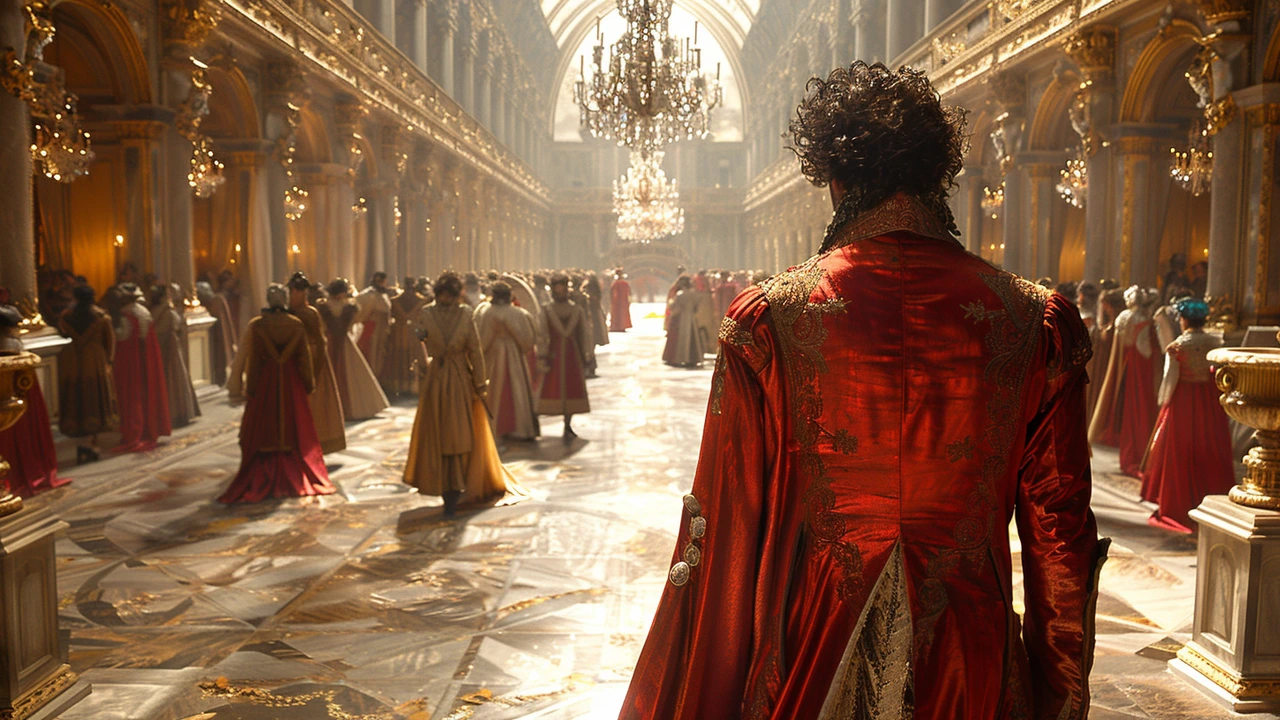
Influence on Later Art Movements
The influence of Rococo on later art movements is undeniable. Although it was initially considered frivolous and overly decorative, attitudes shifted as it became clear how it paved the way for new, innovative artistic expressions in Europe and beyond.
One of the most direct impacts of Rococo can be seen in the Neoclassical movement. Artists became tired of Rococo’s ornate elegance and sought inspiration in classical antiquity. Using cleaner lines and a more structured composition, Neoclassicism still held onto the Rococo’s lighter palette and themes of grace and beauty. This subtle but important connection showcases how Rococo served as a bridge between contrasting eras of art.
Romanticism also showed traces of Rococo’s influence. Although Romantic art often delved into more emotional and sometimes darker themes, it retained Rococo’s emphasis on nature, imagination, and individual expression. Romantic artists celebrated the beauty of untamed landscapes and free-spirited characters, echoing Rococo’s love for idyllic and fantastical scenes.
"Rococo's lighter touch, emphasis on decoration, and imaginative elements made it a precursor to Romanticism," noted art historian Robert Rosenblum.This quote highlights how Rococo's ethos of beauty and individualism continued to resonate throughout art history.
Even the Impressionists, who dominated the late 19th century, can trace some of their stylistic roots back to the Rococo period. Their fascination with light, color, and everyday subjects—not dissimilar to the serene, everyday elegance depicted in Rococo art—formed a subtle but profound link. Monet, Renoir, and other Impressionists created works that were vibrant and full of life, showcasing a similar playfulness found in the Rococo era.
Modern interior design has also borrowed elements of Rococo. The smooth forms, pastel palettes, and intricate details can often be found in contemporary décor, blending historical charm with modern sensibilities. Many modern designers look back to Rococo for inspiration, drawing on its principles of beauty, comfort, and ornamentation.
Understanding Rococo’s impact helps us appreciate how art constantly evolves. What might seem like the end of one artistic era often serves as the birth of another. Since Rococo art embraced joy, whimsy, and a break from tradition, it laid the groundwork for many future movements to explore new ideas.
Tips for Recognizing Rococo Art
Spotting Rococo art can be quite fun once you know what to look for. This movement is all about opulence, charm, and elegance, blending playfulness with intricate details.
First thing you’ll notice about Rococo art is its use of light, pastel colors. Softer shades like baby blue, gold, light pink, and cream dominate the canvas. Unlike the bold and dramatic tones of its predecessor, Baroque, Rococo’s color palette conveys a sense of lightness and whimsicality.
Another telltale sign is the elaborate ornamentation. Artists went all out with swirling patterns, flower motifs, and playful figures. Everything from the brushstrokes to the subject matter seemed to dance and swirl. It’s no surprise that Rococo interiors often feel like stepping into a fairy tale.
Speaking of subject matter, the themes often revolved around love, romance, and nature. You’ll find lots of cherubs, playful couples, and idyllic pastoral scenes. The aim was to evoke joy and delight rather than solemnity or grandeur. In fact, it’s been said that Rococo art brought back imagination and fantasy into the artistic narrative.
“The Rococo is the triumph of woman as decorative muse.” -Wanda Corn
Intricate Detailing
The level of detail in Rococo art is astonishing. Whether it’s a painting, a piece of furniture, or an interior design, everything is finely crafted to the point of impossibility. Artists and craftsmen paid meticulous attention to every tiny element, ensuring that each part contributed to the overall harmony of the piece.
Furniture from the Rococo period often features delicate carvings, curvaceous legs, and ornate frames. In paintings, look for fine details in the costumes and settings. You might even see backgrounds filled with miniature flora and fantastical creatures, adding to the overall sense of enchantment.
Asymmetry and Movement
One of the standout features of Rococo art is its embrace of asymmetry. Unlike the strict symmetry seen in Baroque art, Rococo pieces often have a fluid, unbalanced aesthetic that captures movement and spontaneity. This asymmetry makes the artwork feel more dynamic and lively.
Look closely at the compositions; you’ll notice that elements seem to flow and interact with one another in a natural, organic way. This gives the viewer a feeling of being part of a continuously unfolding scene, rather than looking at a static image.
Focus on Intimacy
Rococo art often creates a sense of intimacy by placing focus on small, personal moments rather than grand, historical events. You might see a cozy gathering in a lush garden or a private, tender moment between lovers. This focus on the intimate and personal creates an emotional connection with the viewer.
In interiors, this translates to cozy, inviting spaces filled with plush furniture and soft lighting. Everything is designed to make you feel comfortable, relaxed, and thoroughly charmed.
Architectural Elements
Don't forget to look at Rococo architecture, which often complements the art. Expect to see buildings with ornate facades, intricate moldings, and rooms that feel lavish yet inviting. These spaces often feature sweeping curves and detailed plasterwork, creating an alluring and charming environment.
In conclusion, recognizing Rococo art is all about appreciating the beauty in the details, the joy in the subject matter, and the elegance in the craftsmanship. This movement's unique characteristics make it an enduring favorite among art enthusiasts.

